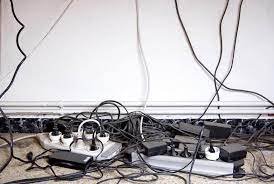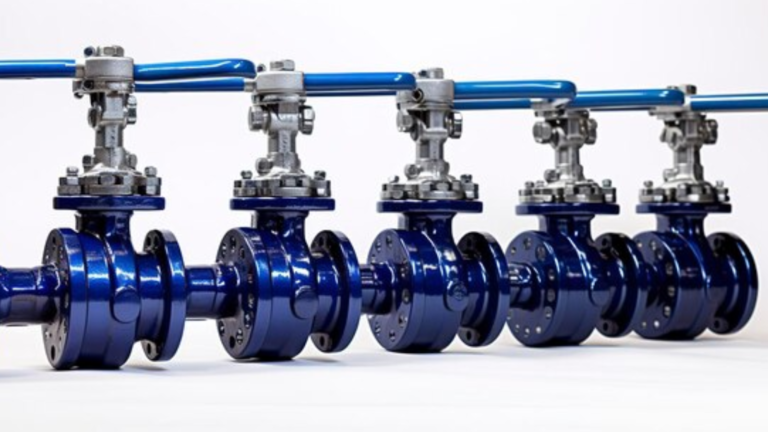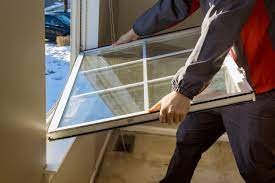In today’s digital age, home offices are becoming increasingly common. With the rise of remote work and telecommuting, many people are setting up workspaces within the comfort of their own homes. However, one common issue that plagues home offices is the tangled mess of cables and cords that often accompany electronic devices. In this article, we will explore the importance of organizing cables and cords in your home office and provide practical tips for keeping them neat and tidy.
The Importance of Organizing Cables and Cords
The sight of tangled cables not only looks unsightly but can also be a safety hazard. Loose cables lying around can lead to tripping hazards and can also cause damage to the cables themselves. Moreover, a cluttered workspace can negatively impact productivity and mental well-being. Research has shown that a clean and organized environment can lead to increased focus and efficiency.
Assessing the Current Cable Situation
Before diving into cable organization, it’s essential to assess the current state of your cables. Take inventory of all the electronic devices in your home office and identify the cables associated with each device. This will give you a clearer picture of the scope of the task at hand and help you determine the best approach to organizing your cables.
Essential Tools and Supplies for Cable Organization
To effectively organize your cables, you’ll need a few essential tools and supplies. These may include cable sleeves, wraps, clips, ties, and labels. Investing in these tools will make the organization process much more manageable and will result in a cleaner and more streamlined workspace.
Strategies for Managing Cables Effectively
There are several strategies you can employ to manage your cables effectively. One approach is to route cables behind desks and furniture to keep them out of sight. Cable sleeves and wraps can also help bundle multiple cables together, reducing clutter and tangling. Additionally, using cable clips and ties to secure cables in place can prevent them from becoming tangled or damaged.
Labeling and Color-Coding Cables
Labeling and color-coding cables can further streamline the organization process. By clearly labeling each cable with its corresponding device or function, you can easily identify and trace cables when needed. Similarly, using different colored cables or markers can help differentiate between cables belonging to different devices or systems.
Creating a Dedicated Cable Management Area
Consider creating a dedicated cable management area in your home office. This could be a designated drawer or cabinet where you store excess cables, adapters, and other accessories. Keeping all your cable-related items in one place will make it easier to find what you need and will prevent clutter from accumulating on your desk or workspace.
Maintenance Tips for Organized Cables and Cords
Once you’ve organized your cables, it’s essential to maintain them regularly. Routinely check for any signs of wear or damage and replace any frayed cables immediately. Additionally, periodically review your cable organization system and make adjustments as needed to accommodate any new devices or changes in your setup.
Safety Considerations for Cable Management
When organizing cables, it’s crucial to prioritize safety. Ensure that cables are not placed in high-traffic areas where they could pose a tripping hazard. Avoid running cables under rugs or carpets, as this can cause damage to the cables and create a fire hazard. Finally, use surge protectors and cable management solutions to minimize the risk of electrical fires and accidents.
DIY Cable Organization Ideas
If you’re on a budget, there are plenty of DIY cable organization ideas you can try. For example, you can repurpose household items like toilet paper rolls or binder clips to keep cables organized and untangled. You can also use zip ties or twist ties to bundle cables together neatly.
How to Avoid Common Cable Organization Mistakes
When organizing cables, it’s easy to make mistakes that can lead to more significant issues down the line. Avoid common pitfalls like overloading power strips, using cheap or low-quality cables, or neglecting to secure cables properly. By being proactive and attentive to detail, you can avoid these mistakes and maintain a tidy and organized workspace.
Benefits of an Organized Home Office Environment
A well-organized home office environment offers numerous benefits beyond just cable management. It can create a sense of calm and order, which can lead to increased productivity and creativity. Additionally, a clutter-free workspace can improve mental well-being and reduce stress levels, ultimately leading to a more enjoyable and fulfilling work experience.
Impact on Productivity and Mental Well-being
Research has shown that the physical environment has a significant impact on productivity and mental well-being. A cluttered and disorganized workspace can lead to feelings of overwhelm and distraction, making it challenging to focus on tasks. In contrast, a clean and organized workspace promotes clarity of thought and allows for better concentration and creativity.
Environmental Benefits of Cable Organization
In addition to the personal benefits of cable organization, there are also environmental benefits to consider. Properly managing cables and electronic devices can help reduce energy consumption and minimize electronic waste. By prolonging the lifespan of cables and devices through proper maintenance and organization, you can contribute to a more sustainable future.
Conclusion
In conclusion, organizing cables and cords in your home office is essential for both practical and aesthetic reasons. By investing time and effort into cable organization, you can create a cleaner and more efficient workspace that promotes productivity and well-being. Whether you opt for simple DIY solutions or invest in professional cable management tools, the benefits of a tidy and organized home office are well worth the effort.
FAQs (Frequently Asked Questions)
- How often should I review and update my cable organization system?
It’s a good idea to review your cable organization system periodically, especially if you add new devices or make changes to your setup. Aim to update your system every few months to ensure it remains effective and efficient. - Are there any safety concerns I should be aware of when organizing cables?
Yes, safety should always be a top priority when organizing cables. Avoid running cables under rugs or carpets, and make sure they are not placed in high-traffic areas where they could pose a tripping hazard. Additionally, use surge protectors and cable management solutions to minimize the risk of electrical fires and accidents. - What are some budget-friendly cable organization solutions?
If you’re on a budget, there are plenty of DIY cable organization ideas you can try. For example, you can repurpose household items like toilet paper rolls or binder clips to keep cables organized and untangled. You can also use zip ties or twist ties to bundle cables together neatly. - How can cable organization improve productivity?
A clean and organized workspace promotes clarity of thought and allows for better concentration and creativity. By reducing clutter and minimizing distractions, cable organization can help you stay focused and productive throughout the workday. - What are the environmental benefits of cable organization?
Properly managing cables and electronic devices can help reduce energy consumption and minimize electronic waste. By prolonging the lifespan of cables and devices through proper maintenance and organization, you can contribute to a more sustainable future.







